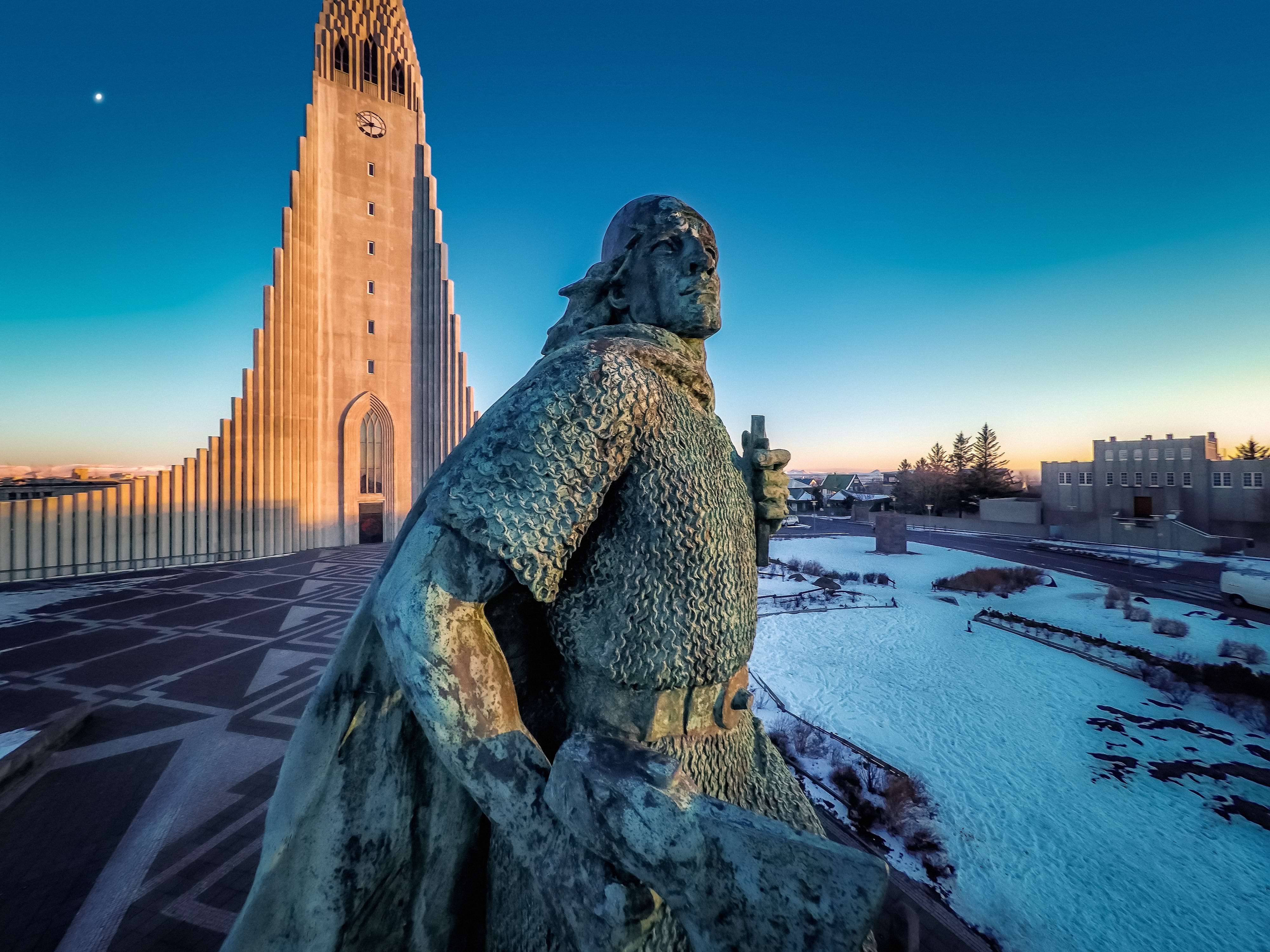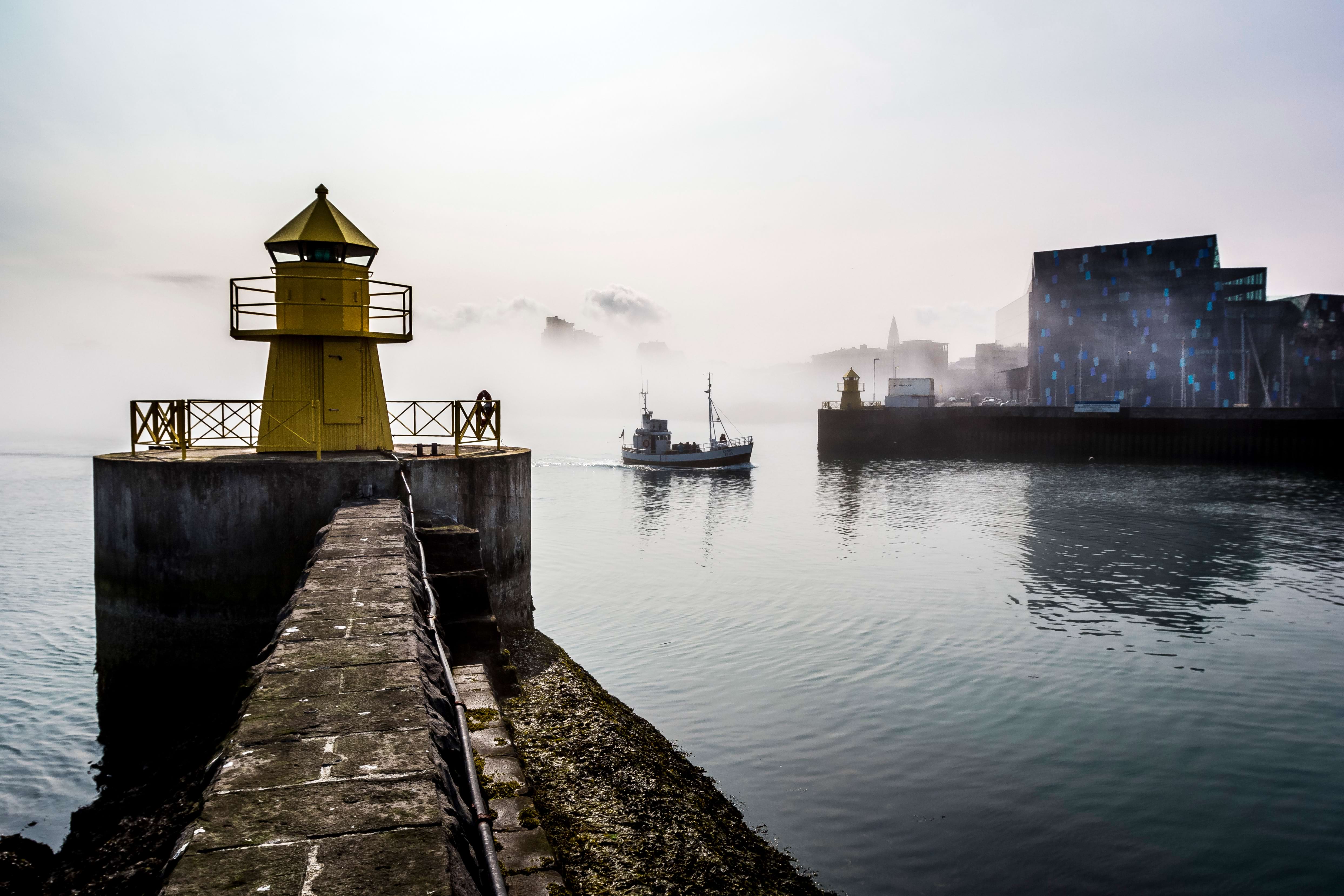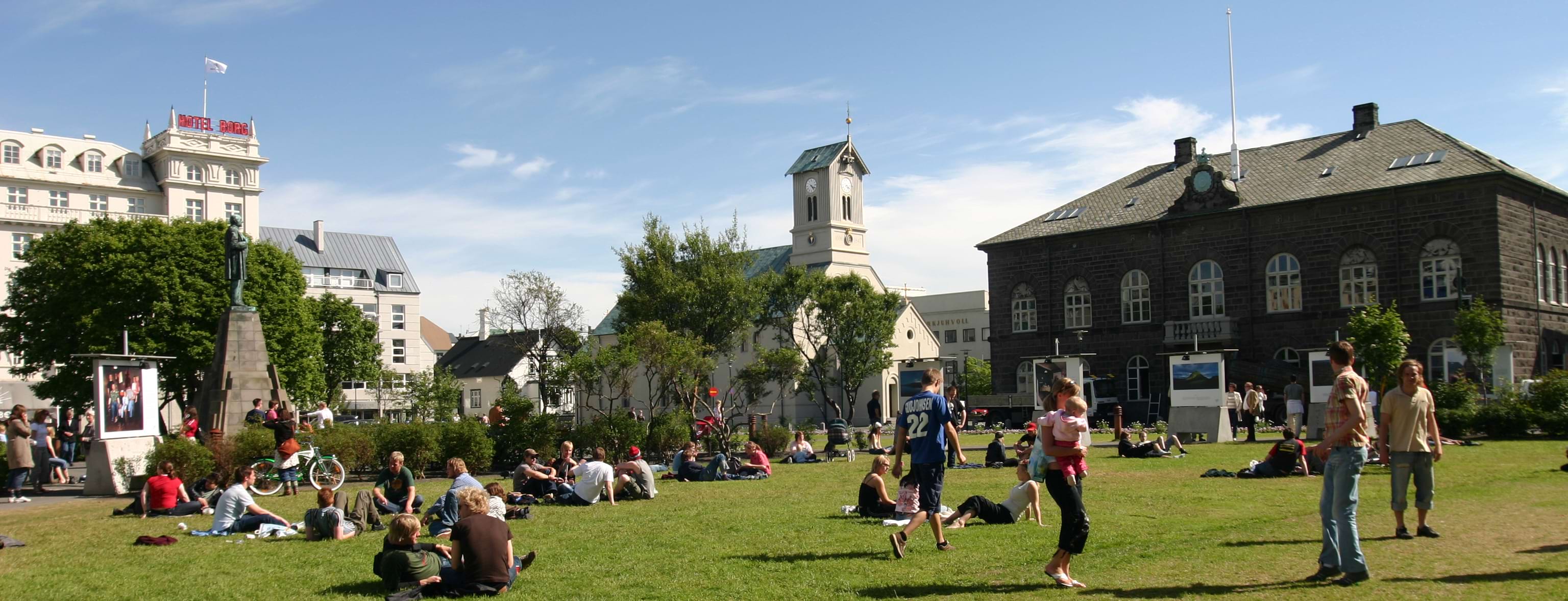A Brief History of Reykjavík
Welcome to Reykjavík, the coolest capital city in the world, where you’ll discover a fabulous mix of fascinating Viking history, breathtaking landscapes, astonishing architecture, bouncing bars, excellent eateries, lively music venues, and much more.
Home to Iceland’s earliest settlers, Reykjavík has grown from its Viking roots to become a compact, cosmopolitan, and quirky capital where everything is close by.
Wherever you walk, there’s a world-class line-up of unforgettable experiences to enjoy, with its colorful streets filled with funky street food vendors, adorable art galleries, beguiling bookshops, marvelous museums, and eclectic design stores.
A vibrant and sophisticated city of bold contrasts, packed with charm and culture, it’s your gateway to Iceland, an ideal base for exploring the “Land of Fire and Ice.”
So, what’s the history of Reykjavík, the world’s most northerly capital, perched on a pretty peninsula halfway between America and Europe?
Read on to find out!

Viking Roots
The first Norse explorers discovered Iceland in the 9th century, with the “Settlement” period lasting about 60 years, from 870-930 AD.
Most of these settlers were looking for other lands, sailing across uncharted Atlantic waters from Norway, Sweden, Denmark, and Viking villages in the British Isles.
You might be surprised to learn Iceland was discovered by accident!
The best-known of these early pioneers is Ingólfr Arnarson, a Norwegian explorer who came to Iceland around 874 AD, forced to leave his homeland after a feud with his king.
He tried to establish homesteads in a few places around Iceland’s South Coast before settling on what is now known as Reykjavík.
Obeying a Norse custom, he tipped the ceremonial seat pillars on his ship into the sea, following as the tide took them towards the coast and committing to making his home wherever they washed ashore.
It’s thought that Arnason chose the name Reykjavík, which means “Smoky Bay,” inspired by the rising clouds of steam from nearby geothermal springs.
He might have been the first to take a dip in the warming waters you can now enjoy at Sky Lagoon!

Early times
For much of its early history, Reykjavík was a tiny and isolated community, with its people focused mainly on farming and fishing.
The first settlers quickly cleared the forests around the bay for homes and shipbuilding before realizing how long trees take to grow in the cold temperatures at the 64th parallel!
All that tree-felling led to a severe lack of building materials - Iceland’s volcanic basalt rock wasn’t much use, and there was no clay for bricks.
So, Reykjavík’s homes were primarily made of peat walls, turf roofs, and stone blocks, with just a few expensive wooden houses raised by wealthy merchants.
Colonial Era
That was how things remained for several centuries while Iceland went from an independent commonwealth to being under the control of Norway and Denmark.
In 1703, Iceland’s first census put the population at just over 50,000, with the site of the capital city we know now still covered in farmland.
It wasn’t until the 18th century before Reykjavík became a recognizably urban center, as more houses were built to accommodate a growing population.
Early attempts to develop a wool industry and other new businesses drew in more people from the rest of Iceland looking for more employment opportunities.
Iceland was under Denmark’s control when Reykjavík earned its status as a “town” in 1786, which made it an important trading center with its own coat of arms.
Reykjavík Cathedral was consecrated in 1796, and its construction is said by some to be an official recognition of Reykjavík as Iceland’s capital.
Iceland’s Ironclads
The 19th century saw clusters of houses and fishermen’s huts springing up around the harbor (the area now known as Vesturbær) and beyond.
The relocation of Iceland’s parliament (Alþingi) to the city in 1845 was another factor in a rising Reykjavík population, along with the founding of the University of Iceland in 1911.
Around this time, modern materials began to arrive in Iceland, offering better protection from the cold Icelandic winters and marking the beginning of the end for traditional turf-roofed homes.
Instead, timber-framed houses covered from top to bottom with corrugated iron sheets became commonplace on the streets of the nation’s capital.
Safer than wooden buildings and better suited to the climate, Iceland’s “ironclads” were considered an ideal solution, particularly after a damaging fire in the city in 1915.
Red roofs were everywhere, as the suppliers color-coded the iron sheets according to thickness. Roofing sheets were red, and nobody knew they could be painted!
Most of the city’s houses rose no more than two stories, allowing the sun’s rays to reach the streets during the long, dark winters and keeping a low profile when fierce winds blew across the peninsula.
You can stroll the streets of the historic Grjótaþorpið neighborhood, the oldest in Reykjavík, to see a colorful collection of these 19th-century wooden houses lining Aðalstræti, Túngáta, Garðastræti, and Vesturgata.
Reykjavík’s port facilities were built during the First World War, boosting the city’s economy and improving infrastructure.
Just after the end of the war in November 1918, Iceland became a fully sovereign state, part of its progress to complete independence from Denmark.
At this point, the population of Reykjavík was just over 16,000.
Between that moment and full independence in 1944, Iceland’s leaders sought to establish a new national identity with grand public buildings made of concrete and cement, transforming Reykjavík from a tiny fishing village into the capital of the world’s newest republic.
In 1928, the geothermal springs that had drawn Ingólfr Arnarson a thousand years before and where the locals had washed their clothes for centuries, were first tapped to heat Icelandic homes.
This began Iceland’s world-beating expertise in harnessing geothermal power for hot water, heating, and power generation.
A few years later, the same springs were used to warm the waters at Sundhöllinn swimming pool, establishing the roots of Iceland’s unique “swimming pool culture.”
Wartime Developments
The Second World War put Iceland on the map, with its mid-Atlantic position making it strategically vital for the Allied forces.
British forces arrived in Reykjavík in May 1940, quickly establishing bases around the capital and building roads and airstrips.
The Americans took over the following year, which had an electrifying effect on the local economy, with significant infrastructure projects nationwide.
The Second World War triggered such an economic transformation that some Icelanders called this period the “Blessed War.”
Iceland confirmed its independence from Denmark in June 1944, after 682 years of foreign rule.
Reykjavík was its proud capital, finally considered a “city” rather than a town.
The Modern Era
Post-war developments in agriculture reduced the need for manpower on Iceland’s farms, triggering an influx of people to the capital city in search of new employment opportunities and better living conditions.
New suburbs lined with modern apartment buildings sprang up around the city to accommodate the growing population (now around 55,000), linked by broad boulevards snaking around the capital.
This rapid rise in Reykjavík’s population and the significant changes in Iceland’s economy triggered some notable sociological developments.
On 24 October 1975, Reykjavík was packed with thousands of women who took Iceland’s men by surprise with a national day of action highlighting the gender pay gap and women’s contribution to society.
The “Women’s Day Off” (Kvennafrídagurinn) was a tremendous success, kickstarting Iceland’s world-leading pursuit of greater equality and social inclusion.
Reykjavík’s international reputation was further boosted by two notable Cold War events.
The World Chess Championship match at Laugardalshöll between Bobby Fischer and Boris Spassky captured the world’s attention in 1972.
The competition, later called the Match of the Century by enthralled chess fans, was won by the American challenger Bobby Fischer, who later made Iceland his home.
And in 1986, the summit meeting of US President Ronald Reagan and the Soviet leader Mikhail Gorbachev at Höfði came close to achieving a considerable reduction in the nuclear weapon stockpiles held by each side.
Despite the failure to reach an agreement, the summit undoubtedly improved relations between the two blocs and the eventual end of the Cold War.
That year also saw the completion of Hallgrímskirkja, Reykjavík’s iconic church, which can be seen from several miles away, towering above the city.
Hallgrímskirkja’s extraordinary design echoes Iceland’s beautiful basalt columns. Its church tower offers unbeatable views of the city and surrounding mountains.
By the millennium, Reykjavík’s population had topped 100,000.
The 21st century
The “boom” years of the early 2000s saw rapid urban development in Reykjavík, with its traditional low-rise architecture now accompanied by soaring skyscrapers and a gleaming central business district.
Reykjavík once again captured the world’s attention in 2008 when the global economic crisis found a focal point in Iceland’s response to the financial crash.
The streets of the capital saw sizable protests from the population, which gave its government the authority to act more fairly than seen elsewhere.
Iceland was one of the few countries that protected its citizens from the undeserved effects of the decisions of a few reckless financial institutions and individuals with price freezes and other economic support.

Opening up to the world
The Eyjafjallajökull eruption in 2010 put Iceland on the map in a big way, triggering great interest in visiting the “Land of Fire and Ice” and boosting Reykjavík as a holiday destination.
Construction cranes soon joined the multi-colored rooftops of Reykjavík as new hotels, attractions, and other facilities were built to accommodate Iceland’s latest visitors.
Perhaps the most famous of these new additions was Harpa, the astonishing opera hall close to the harbor.
Opened in 2011, Harpa’s unique design features geometric glass panels shaped to mirror Iceland’s basalt landscapes, which can be programmed to light up in fabulous displays.
The city center has continued to see many exciting new developments, particularly around the Old Harbor and the Grandi district, home to FlyOver Iceland and The Lava Show.
Grandi was focused on fishing for centuries, but reflecting Reykjavík’s rapid rise in recent years, it’s now a magnet for innovative tech companies, artists, and foodies.
Explore Iceland’s history at sea at the Reykjavík Maritime Museum and Whales of Iceland, or see it from above at FlyOver Iceland.
Grab a bite at the Grandi Mathöll food hall or Kaffivagninn, Iceland’s oldest restaurant, or treat yourself to ice cream at Valdís or chocolates from OMNOM.